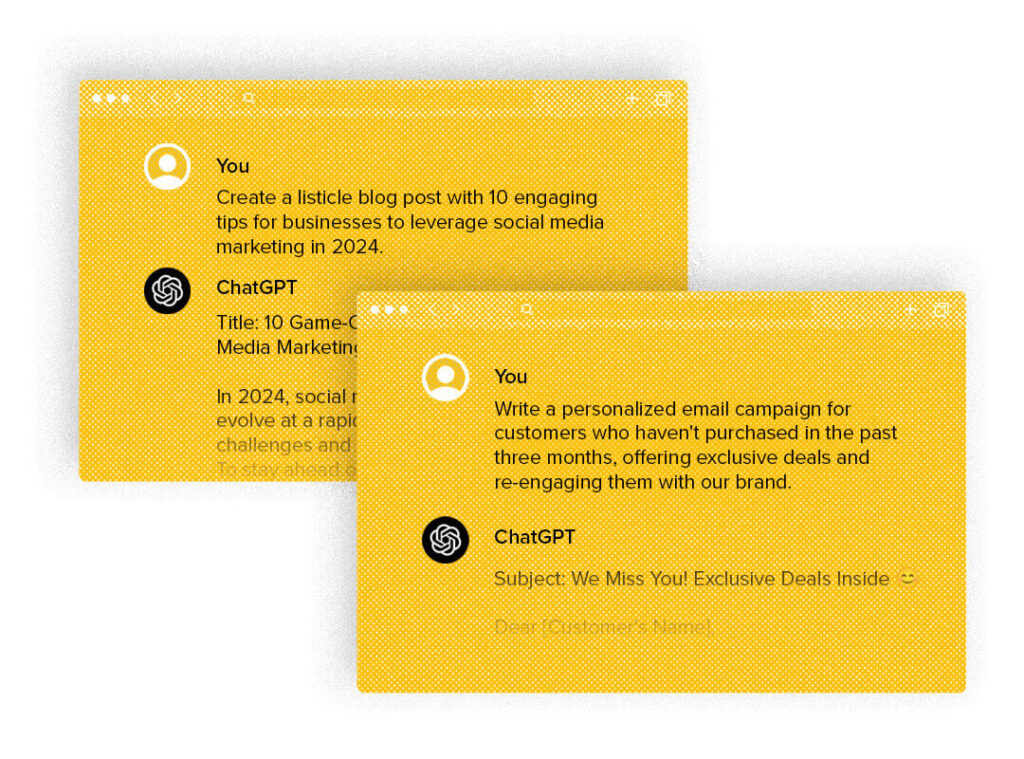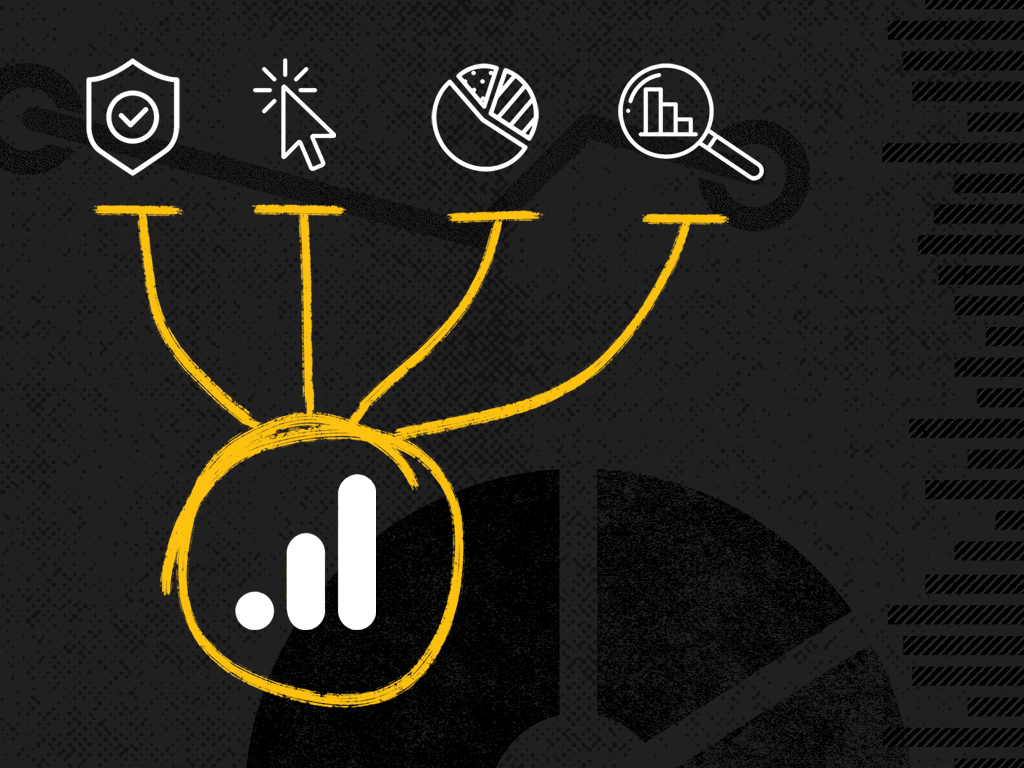Understanding and responding to your customers’ perspectives has become more vital than ever. Without understanding your customers’ points of view, making informed business decisions turns into a guessing game. And in today’s dynamic landscape, customer preferences can shift swiftly. When coupled with an increasingly volatile and competitive operating environment, gaining insight into their viewpoints isn’t just advantageous—it’s essential to unlocking growth and staying ahead of the curve.
While business decision makers clearly desire critical insights into customer experience, it’s also becoming increasingly challenging. With growing concerns about privacy, the rise in importance (and difficulty) of capturing first-party data, and shorter customer attention spans, businesses face the task of navigating these complexities to comprehend their customers better.
The good news is that there are best practices for measuring customer perspective that nearly every company can implement. Let’s dive in.
Building a customer-centric measurement approach: 3 core principles
Before we jump into the nitty gritty of measurement tactics, we have to align on three core principles that top-performing firms adopt into their operating philosophies and approaches to their customers’ journeys:
1. Embrace a diverse range of tactics. It’s not enough to rely on a single method; instead, a combination of approaches is essential to gain a comprehensive understanding of your customers’ experiences.
2. Automation and data are your friends. Many companies manually deploy an annual customer survey as their key measure of CX performance. While useful, this snapshot in time is far from ideal in terms of creating regular, rich insights that are actionable. Automating surveys allows for real-time data collection and the ability to capture the current voice of the customer.
3. Align data to your customer segments or personas. Every business knows its customers are far from homogeneous. The best companies ensure the data they’re collecting is appended to existing data they have on their customers (CRM data, for example) so that they can slice and dice as necessary.
How to measure customer perspectives: proven tactics
With those core principles in mind, below are some key tactics that can help you keep a pulse on your customers’ perspectives. While certainly not an exhaustive list of the metrics and data points businesses should be tracking, these tactics are particularly powerful when it comes to rallying teams around customer perspectives, solving issues, and making big strides in business performance.
Transactional Customer Satisfaction (TSAT or T-CSAT)
A riff on the age-old classic of overall CSAT, transactional CSAT is measured and triggered by specific interactions that represent only a portion of the customer’s experience with your brand. The power of this tactic lies in its fixed parameters. Unlike overall CSAT, which asks customers to think broadly, often leading to muted or generalized feedback, transactional CSAT captures customer perspectives in relation to a very recent, specific experience. The result produces two fantastic benefits:
1. Feedback is more visceral and clearly tied to a specific experience. It’s easier to find patterns related to a specific conversation, interaction, or even UX affordance, and you can directly measure or correlate changes made in these areas to future measurements.
2. Transactional CSAT feedback can be collected across the entire customer journey, giving you multiple points of feedback on specific interactions or experiences with a brand. This enables companies to build a complete, measurable picture of a customer’s experience across their journey, further boosting abilities to test, learn, and improve.
Leveraging these patterns, they implemented UX improvements across their digital properties, boosting the blended average of TCSAT scores by 23% in less than six months.
A national insurance provider we worked with implemented Transactional CSAT at critical steps like their customer quote, customer bind, first billing, and even specific interactions within their service portal. It enabled them to pinpoint patterns of customer feedback both within the “steps” in the journey and across it. Leveraging these patterns, they were able to implement UX improvements across their digital properties, boosting the blended average of TCSAT scores by 23% in less than six months.
Implemented using a mix of the standard Likert scale (scaled rating system) and 1-2 open response questions, Transactional CSAT provides the perfect blend of measurable quantitative and qualitative data to make decisions. And it’s all the more powerful if you can tie it back to some source of protected first-party data.
Quantitative data
Every company wants to be “data-driven,” but few truly are. By the same token, too many companies view quantitative data sources as the only empirical way to make decisions. At Tallwave, we view quantitative data as a key driver of decision-making, and we seek to complement it with qualitative data as well.
In a previous article, we outlined nine key metrics that every business should measure, but here are the top three that we recommend every company that has a tech- or digitally-oriented customer experience focus in on:
1. Metrics at the microconversion level: It’s particularly important that your team understands customer reactions along the path to conversion. While these micro-actions might seem like “obvious” metrics, we find that companies rarely track them on a granular enough level and, as a result, ignore minor changes that could have a major impact.
Looking for another resource? Hotjar has a great article on how to think about microconversions and how to start measuring them.
2. User paths/customer flow: This goes beyond the customer funnel and into actual user behavior. We track this data because it tells us where users think they should be looking for information or things they think will help them accomplish their goals. This, in turn, tells us where to focus to improve their journeys. The important key here is that we’re looking for where the volume of your user behavior is going. For example, if a customer abandons their cart, what percent go back to the previous page or edit cart vs. fully close out of the page? Where do they go next?
A couple of key questions your team should be asking themselves here:
- How often do customers actually follow the “happy path” that I have designed for them?
- When they deviate from that path, where do they go?
3. KPIs: This is an obvious one, but it has to be on the list. If your company does not have an existing dashboard that clearly tells a story around your top KPIs, we have a couple of useful articles on data quality management and the power of data storytelling that will help guide your journey.
User recordings
Simply put, there is no better way to visualize how your customers are experiencing your brand or product than watching them navigate the pages of your website or interact in your app. Better yet, there is no better way to illustrate the pain they feel when they run into a roadblock or can’t find what they’re looking for.
We strongly suggest implementing one of any number of UX recording tools to catalog, tag, and view user sessions. Even watching just 10-20 recordings per week could unlock major advances in understanding how to deliver on user expectations. While it’s not the only source of data you should rely upon, we’ve often found there is nothing better to bring a story to life than this.
How to make the most of your data to understand customer perspectives
We’ve covered a lot of ground here, yet there’s still so much more to unlocking the power of insight into customer perspectives. If we can leave you with just one thought, it is this…
Understanding customer perspectives is all about understanding their customer journeys. Each of the tactics we’ve covered here is oriented toward illuminating those journeys, either by collecting direct feedback on a string of snapshots in time, or by actually tracking the step-by-step progress of customers (microconversions) on the way to a conversion.
And once you have collected the data, the next step is to leverage the data to understand how to remove friction, eliminate confusion, and simplify the process of customers getting to their ultimate end goals. See how we helped an e-commerce company double its revenue in just three months by doing just that. Interested in learning more about how we can help your business measure and activate on your customers’ perspectives? Drop us a line…



















